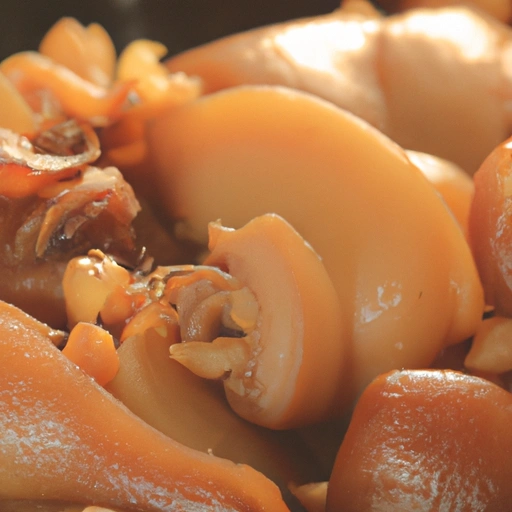Pig's Tail
Description

Pig's tail is a distinctive and flavorful ingredient popular in various cuisines around the world. It consists of the rear tail portion of a pig, which is often sold smoked, cured, or fresh. This ingredient is known for its gelatinous texture and rich, meaty flavor that can add a unique dimension to a wide range of dishes.
Common uses
Pig's tail is commonly used to add flavor and texture to broths, soups, stews, and beans. It is also utilized in the preparation of stocks, where it imparts a depth of flavor and a silky mouthfeel due to its collagen content.
Nutritional value
Calories
100 grams (approximately 3.5 ounces) of cooked pig's tail contains about 375 to 400 calories, mainly from its high fat content.
Protein
Pig's tail provides around 14 grams of protein per 100 grams (3.5 ounces), which contributes to muscle maintenance and repair.
Fat
With about 30-35 grams of fat per 100 grams (3.5 ounces), pig's tail is rich in fats, including both saturated and unsaturated types.
Carbohydrates
This ingredient contains negligible amounts of carbohydrates, making it a low-carb option for those on certain diets.
Vitamins
Pig's tail contains vitamins such as B-vitamins, which are important for energy metabolism and nervous system health.
Minerals
It is a source of minerals like phosphorus, zinc, and iron, which play crucial roles in bone health, immune function, and oxygen transport in the blood.
Health benefits
The gelatin in pig's tail can support joint health and skin elasticity. The protein content is beneficial for muscle growth and repair, while the B-vitamins help maintain various metabolic processes.
Potential risks
Due to its high fat and cholesterol content, excessive consumption of pig's tail may increase the risk of heart disease. Additionally, if not prepared properly, there is a risk of foodborne illness.
Common recipes
Common recipes include Jamaican Red Peas Soup, Southern Black-Eyed Peas, and European-style braised pig's tail with beans.
Cooking methods
Pig's tail can be slow-cooked, braised, smoked, or boiled to extract its flavors and tenderize the tough connective tissues.
Pairing with other ingredients
It pairs well with legumes, root vegetables, and hearty greens. Spices such as thyme, bay leaf, and allspice complement its rich taste.
Summary
Pig's tail is an underappreciated ingredient with a rich culinary history and versatility. It provides depth of flavor and a unique texture to various dishes. While nutritious in certain aspects, moderation is key due to its high fat content. When prepared and enjoyed properly, pig's tail can be a delightful addition to many recipes, offering a glimpse into traditional cooking methods and flavors.